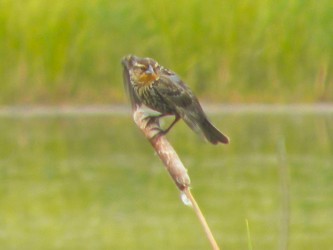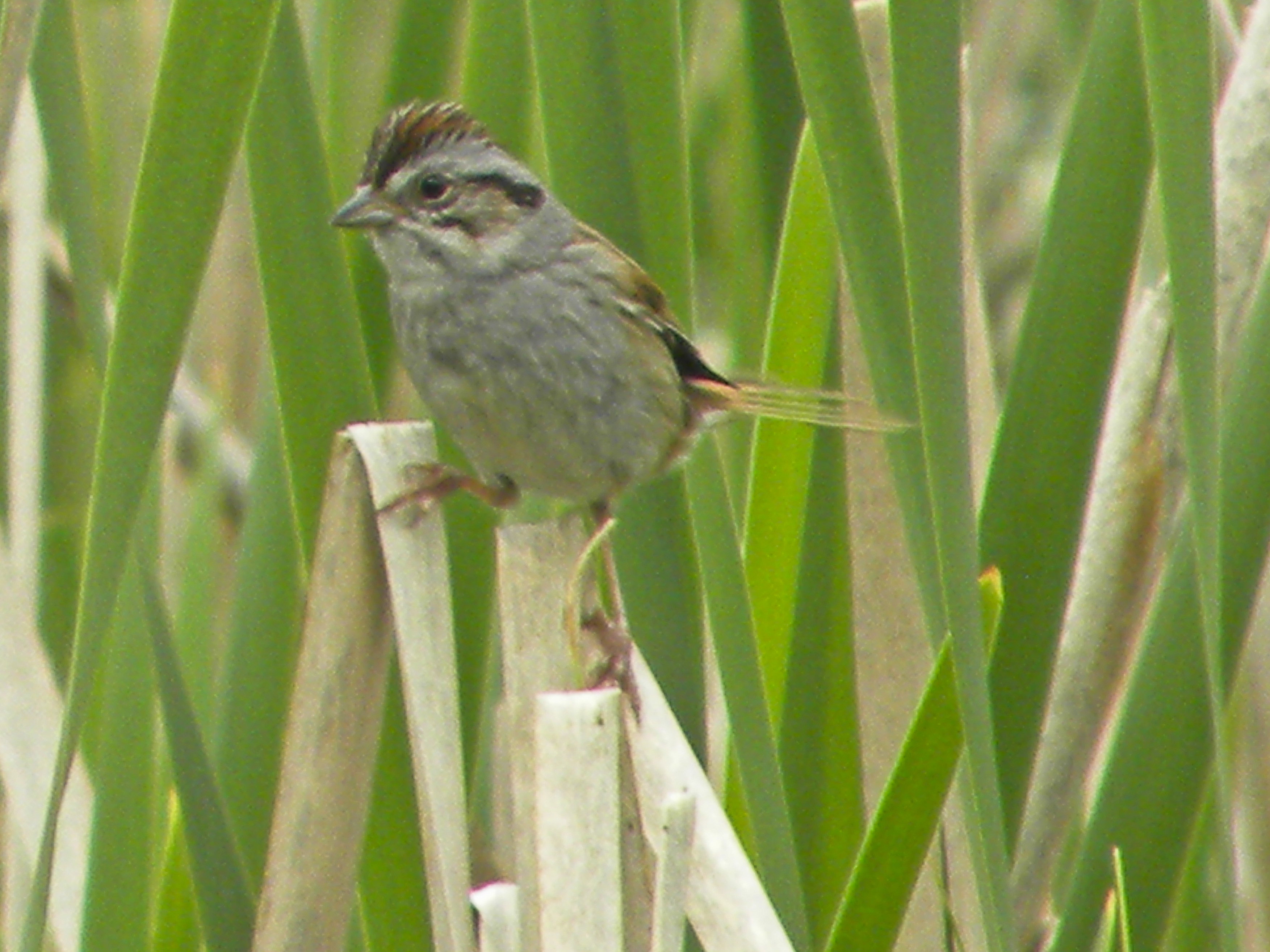Thermoregulation; foraging black terns; red-winged black birds and the “trillers”
26 JUNE, 2012
We awoke this morning to wind gusts of 45+ kilometres per hour buffeting the Aspen (Populus tremuloides) stand that surrounds. Yet another “weather day”—the third such day of the last four—and we are thus unable to go into the field.
When it comes to conducting auditory breeding bird surveys (or “point counts;” listening to the songs of breeding birds to establish their presence) in the boreal forest, there are certain weather conditions that need be met for an observer to accurately detect the songs of nearby birds. One such condition is that it mustn’t rain or be windy, at least not severe enough to obscure or render the birdsongs difficult to hear.
The net effect of trying to carry out these listening-based surveys during a wind or rainstorm, or even a light shower, is that the data recorded may not be a reliable assessment of the species present in the survey area at the time of the survey. Birds may be singing though go undetected due to noise caused by wind and rain, or they may not be singing at all and saving their energy.
One of the most important survival mechanisms at the disposal of birds, and many other organisms, is the ability to conserve energy, to control their body temperature (i.e., thermoregulation). This ability is vitally important for birds when they need to conserve heat in the event of lowering temperatures and rain, lest they parish.
We often take for granted the function of wings and feathers; that they’ve achieved flight in most birds (save for a group of flightless birds including the Galapagos Cormorant) is assumed to be a no-brainer. Feathered wings fly. From an evolutionary and mechanistic perspective, the primary question of how wings may have lead to flight isn’t always so obvious. In fact, the question is still debated among some circles in paleobiology. However, several compelling hypotheses note that feather-covered wings in birds were perhaps initially more like protoflight hardware used for the purposes of gliding in some cases, and that feathers more generally aided in thermoregulation as well as being used in courtship displays and for camouflage.
It’s conceivable that some individual birds might be less active during rainfall here in the boreal in late July—there is, after all, a cost of energy associated with singing your heart out while also attempting to keep a family safe, fed, dry and warm—and so those unsung individuals would go unnoticed were we to perform a survey in the wind or rain. Rather than needlessly expend hard-won energy singing at rivals or mates that cannot hear them clearly enough to care through the noises of a storm, some birds may opt to divert this energy towards the more pressing task of keeping themselves, their chicks or eggs warm and dry.
On this day, the wind has won: a quiet sets in and the birds and the bird watchers both batten down the hatches. Luckily, last night we happened upon perhaps the best camping spot this summer to wait-out the windstorm. Surrounded by a landscape of sandy aspen-pine parkland and pasture, with groupings of fenced-in cattle tarrying over a meadow of overgrazed bluegrass (Poa) and other grasses, we tented adjacent to a small pond sunken beneath the horizon. From the campground, one or two blackish silhouettes could be seen hovering and dive-bombing—fishing—the pond’s windswept surface.
The rain was holding out, and so with nothing productive to do I took to spying on and identifying those indistinct black birds above the water. As I cautiously approached the reedy edges of the pond, the fishing behavior of these birds struck me as very familiar. As I arrived, I noticed the area immediately above the pond’s surface had more than just “a couple” of these individuals; rather, the pond was replete with foraging black terns (Chlidonias niger).

Having worked for a summer on an island off the coast of Nova Scotia with a breeding colony of arctic (Sterna paradisaea) common (Sterna hirundo) and roseate (Sterna dougallii) terns, I became acquainted with the characteristic grace of tern hovering and feeding behavior that I witnessed again, today, over a pond in northern Alberta.
Terns are such elegant looking birds. Indeed, the whitish coastal species were a hit with 19th century fashionitas, so much so that they were nearly hunted to extinction along the Atlantic coast to feed a growing and inane demand for women’s chapeaus adorned in their feathers and taxedermied bodies.
After spending an hour in vane trying to snap a decent photo of one of the black terns mid-hover (see grainy attempt above), another character caught my attention. I waded shin-deep up to a swath of reeds with a couple of drab individuals bobbing and swaying atop the cattail-lined edges of the pond. It was a mated pair of red-winged black birds (Agelaius phoeniceus).

The male soon left, and not long afterward the female red-winged black bird (“red-wing”) began performing a curious broken-wing display with what looked to be a grub or caterpillar clenched between its maternal beak. This wounded gesture, I divined, was her way of distracting me—a perceived predator or threat—away from the site of her nest and progeny. Were I a legitimate predator, by making herself appear injured she might lure me into a wild goose chase, so to speak – a chase that would ideally land me far away from the nest site.
Occasionally I lost sight of her as she would take-off and disappear into the thick reeds. When I eventually had my camera ready and she reappeared on the tip of a cattail stalk, she was now grub-free—her chicks likely now fed—and back to the broken-wing display (see above).
The female red-wing not too keen on my being present, I walked ashore and towards the song of one of the only birds I heard singing the entire day – the swamp sparrow (Melospiza georgiana). The slow “chinga chinga chinga” song of the swamp sparrow is classified as a “trill,” and thus informally belongs to a group of migratory passerines (or songbirds) with trilling qualities to their songs. This group includes the chipping sparrow (Spizella passerina), dark-eyed junco (Junco hyemalis), palm warbler (Setophaga palmarum), orange-crowned warbler (Oreothlypis celata), and swamp sparrow, to name a few.
Agitated by my entering his section of the reeds, the male swamp sparrow (see image at top of page) tried to angrily sing me into oblivion. I couldn’t give him or the female red-wing “oblivion,” but I did withdraw myself from the pond area altogether and headed back to camp for the evening.





